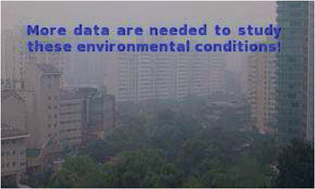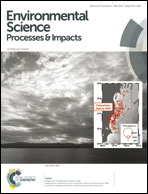Enhancement of PM2.5 exposure estimation using PM10 observations†
Abstract
The adverse consequences of particulate matter (PM) inhalation on human health are well documented. Most of the epidemiological work assessing the health impacts of PM exposure concentrates on PM2.5, however, many of the PM monitoring records available for retrospective studies are of coarser PM10 data. This study explores the possibility to simulate PM2.5 data using PM10 records and assesses the trade-off between introduction of the unavoidable simulation errors and the improved spatial coverage enabled by the simulated series. Several modelling approaches are studied, bearing in mind the range of exposure time scales typical to environmental epidemiology studies. The modelling capability is evaluated by cross-testing between three stations observing both the PM2.5 and PM10 fractions. The trade-off between improved spatial coverage and simulation errors is assessed using leave-one-out cross-validation interpolations. Interpolations including both original and simulated data resulted in richer spatial patterns. Their cross-validated performance was comparable to or slightly better than that obtained using the original PM2.5 data only. The study provides methodologies and guidelines for scientists and practitioners on how to properly exploit their PM10 data to enhance their PM2.5 spatial coverage and minimise investment in new PM2.5 monitoring.


 Please wait while we load your content...
Please wait while we load your content...